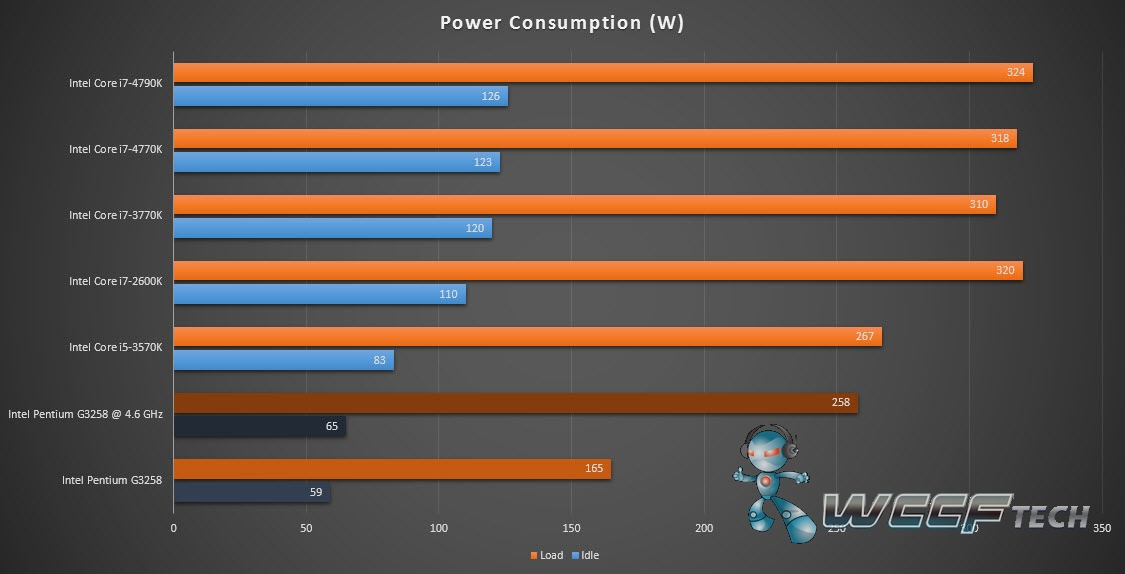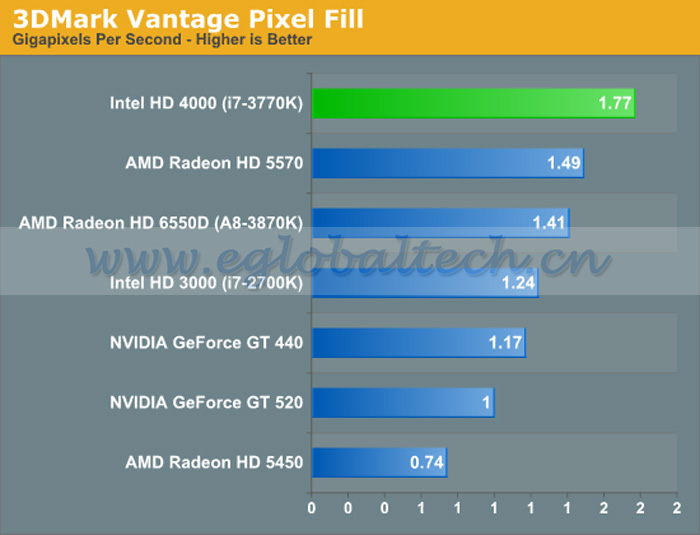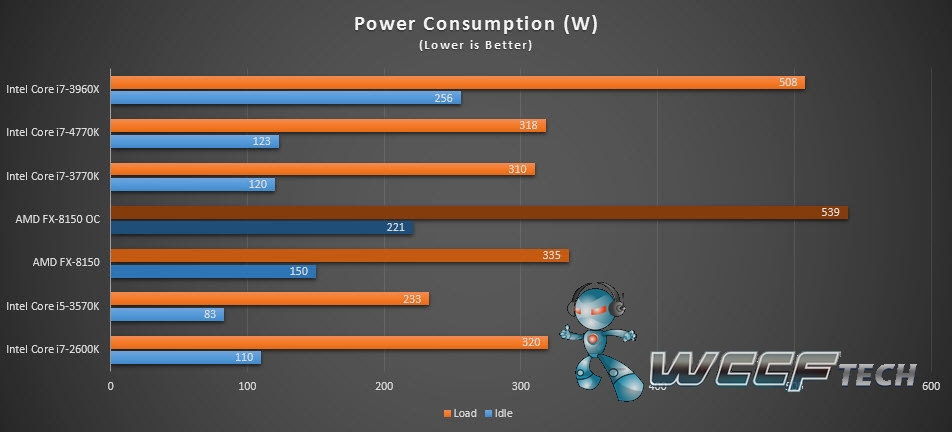Temperature & Power Consumption : Scaling New Heights — ATI Radeon HD 4850 512MB GDDR3
Trending
Deal Alert: Build A PC — Graphics Card *Updated*
Apple CEO says Apple Pay Later will be launching «soon»
End of CNY sale: 10 great deals for the home and office
Product Listing
- News
- Reviews & Articles
-
Page 1 of 13 — Scaling New HeightsPage 2 of 13 — RV770 Architectural ChangesPage 3 of 13 — ATI Goes GDDR5Page 4 of 13 — The MSI R4850-T2D512Page 5 of 13 — Test SetupPage 6 of 13 — Win XP Results — 3DMark06 (ver 110)Page 7 of 13 — Win XP Results — Company of Heroes & F.E.A.RPage 8 of 13 — Win XP Results — Crysis & Unreal Tournament 3Page 9 of 13 — Win Vista Results — 3DMark VantagePage 10 of 13 — Win Vista Results — Crysis (ver 1.21)Page 11 of 13 — NVIDIA’s CounterPage 12 of 13 — Temperature & Power ConsumptionPage 13 of 13 — Back in the Game
Page 12 of 13 — Temperature & Power Consumption
- Next >
Temperature
Our biggest grouse with the Radeon HD 4850 is its high temperatures. With a 55nm core, we had expected something like the level of a Radeon HD 3870 X2 perhaps. Instead, we got one of the highest temperatures we have seen on a GPU for a while, with the core exceeding 80 degrees Celsius constantly under load. Even idle temperatures were not much better, only dipping slightly below 80. The single slot fan’s rather sedate spin could be a reason and you can expect vendors to be attaching all sorts of custom coolers to tame this warm beast. If you’re worried about heat and less concerned about noise, turning up the fan speed manually is the best we can recommend for a standard Radeon HD 4850.
Power Consumption
ATI’s PowerPlay implementation on the Radeon HD 4850 was a bit disappointing. NVIDIA looks to have done a better job scaling down the power consumption of its mammoth GTX 200 GPUs at idle, though of course at load, the Radeon HD 4850 was among the lowest in our comparison, roughly equal to the GeForce 9800 GTX. Given that the typical GPU should spend much of the time idling, ATI needs to do more work here (which is exactly what ATI is doing at the moment the last we discussed of this issue with them). A CrossFireX setup also should consume a fair amount of power so be prepared for that if you’re looking to get a relatively affordable pair of Radeon HD 4850 cards.
A CrossFireX setup also should consume a fair amount of power so be prepared for that if you’re looking to get a relatively affordable pair of Radeon HD 4850 cards.
-
Page 1 of 13 — Scaling New HeightsPage 2 of 13 — RV770 Architectural ChangesPage 3 of 13 — ATI Goes GDDR5Page 4 of 13 — The MSI R4850-T2D512Page 5 of 13 — Test SetupPage 6 of 13 — Win XP Results — 3DMark06 (ver 110)Page 7 of 13 — Win XP Results — Company of Heroes & F.E.A.RPage 8 of 13 — Win XP Results — Crysis & Unreal Tournament 3Page 9 of 13 — Win Vista Results — 3DMark VantagePage 10 of 13 — Win Vista Results — Crysis (ver 1.21)Page 11 of 13 — NVIDIA’s CounterPage 12 of 13 — Temperature & Power ConsumptionPage 13 of 13 — Back in the Game
Page 12 of 13 — Temperature & Power Consumption
- Next >
Join HWZ’s Telegram channel here and catch all the latest tech news!
Our articles may contain affiliate links. If you buy through these links, we may earn a small commission.
If you buy through these links, we may earn a small commission.
Sponsored Links
iMac power consumption and thermal output
Learn about the power consumption and thermal output (BTU) of iMac computers.
|
iMac (24-inch, M1, 2021) |
|||
| Power Consumption | Thermal Output | ||
|---|---|---|---|
| Idle | CPU Max | Idle | CPU Max |
| 43W | 80W | 147 BTU/h | 274 BTU/h |
|
iMac (24-inch, M1, 2021) |
|||
| Power Consumption | Thermal Output | ||
|---|---|---|---|
| Idle | CPU Max | Idle | CPU Max |
| 43W | 84W | 147 BTU/h | 286 BTU/h |
|
iMac (Retina 5K, 27-inch, 2020) |
|||
| Power Consumption | Thermal Output | ||
|---|---|---|---|
| Idle | CPU Max | Idle | CPU Max |
| 74W | 295W | 252 BTU/h | 1007 BTU/h |
|
iMac (Retina 5K, 27-inch, 2019) |
|||
|
Power Consumption |
Thermal Output |
||
|---|---|---|---|
|
Idle |
CPU Max |
Idle |
CPU Max |
|
71W |
262W |
242 BTU/h |
895 BTU/h |
|
iMac (Retina 4K, 21. |
|||
|
Power Consumption |
Thermal Output |
||
|---|---|---|---|
|
Idle |
CPU Max |
Idle |
CPU Max |
|
47W |
166W |
161 BTU/h |
568 BTU/h |
|
iMac (Retina 5K, 27-inch, 2017) |
|||
|
Power Consumption |
Thermal Output |
||
|---|---|---|---|
|
Idle |
CPU Max |
Idle |
CPU Max |
|
71W |
217W |
242 BTU/h |
741 BTU/h |
|
iMac (Retina 4K, 21. |
|||
|
Power Consumption |
Thermal Output |
||
|---|---|---|---|
|
Idle |
CPU Max |
Idle |
CPU Max |
|
49W |
161W |
168 BTU/h |
550 BTU/h |
|
iMac (21.5-inch, 2017) |
|||
|
Power Consumption |
Thermal Output |
||
|---|---|---|---|
|
Idle |
CPU Max |
Idle |
CPU Max |
|
33W |
74W |
113 BTU/h |
253 BTU/h |
|
iMac (Retina 5K, 27-inch, Late 2015) |
|||
|
Power Consumption |
Thermal Output |
||
|---|---|---|---|
|
Idle |
CPU Max |
Idle |
CPU Max |
|
63W |
240W |
215 BTU/h |
819 BTU/h |
|
iMac (Retina 4K, 21.5-inch, Late 2015) |
|||
|
Power Consumption |
Thermal Output |
||
|---|---|---|---|
|
Idle |
CPU Max |
Idle |
CPU Max |
|
40W |
119W |
136 BTU/h |
406 BTU/h |
|
iMac (21. |
|||
|
Power Consumption |
Thermal Output |
||
|---|---|---|---|
|
Idle |
CPU Max |
Idle |
CPU Max |
|
33W |
58W |
113 BTU/h |
198 BTU/h |
|
iMac (Retina 5K, 27-inch, Mid 2015) |
|||
|
Power Consumption |
Thermal Output |
||
|---|---|---|---|
|
Idle |
CPU Max |
Idle |
CPU Max |
|
70W |
197W |
239 BTU/h |
673 BTU/h |
|
iMac (Retina 5K, 27-inch, Late 2014) |
|||
|
Power Consumption |
Thermal Output |
||
|---|---|---|---|
|
Idle |
CPU Max |
Idle |
CPU Max |
|
70W |
288W |
239 BTU/h |
983 BTU/h |
|
iMac (21. |
|||
|
Power Consumption |
Thermal Output |
||
|---|---|---|---|
|
Idle |
CPU Max |
Idle |
CPU Max |
|
33W |
68W |
113 BTU/h |
232 BTU/h |
|
iMac (21.5-inch, Late 2013) |
|||
|
Power Consumption |
Thermal Output |
||
|---|---|---|---|
|
Idle |
CPU Max |
Idle |
CPU Max |
|
37W |
136W |
126 BTU/h |
463 BTU/h |
|
iMac (21. |
|||
|
Power Consumption |
Thermal Output |
||
|---|---|---|---|
|
Idle |
CPU Max |
Idle |
CPU Max |
|
37W |
94W |
127 BTU/h |
322 BTU/h |
|
iMac (21.5-inch, Late 2013) |
|||
|
Power Consumption |
Thermal Output |
||
|---|---|---|---|
|
Idle |
CPU Max |
Idle |
CPU Max |
|
38W |
91W |
129 BTU/h |
311 BTU/h |
|
iMac (27-inch, Late 2013) |
|||
|
Power Consumption |
Thermal Output |
||
|---|---|---|---|
|
Idle |
CPU Max |
Idle |
CPU Max |
|
78W |
229W |
266 BTU/h |
782 BTU/h |
|
iMac (27-inch, Late 2013) |
|||
|
Power Consumption |
Thermal Output |
||
|---|---|---|---|
|
Idle |
CPU Max |
Idle |
CPU Max |
|
80W |
214W |
274 BTU/h |
729 BTU/h |
|
iMac (27-inch, Late 2013) |
|||
|
Power Consumption |
Thermal Output |
||
|---|---|---|---|
|
Idle |
CPU Max |
Idle |
CPU Max |
|
78W |
180W |
268 BTU/h |
615 BTU/h |
|
iMac (21.5-inch, Late 2011) |
|||
|
Power Consumption |
Thermal Output |
||
|---|---|---|---|
|
Idle |
CPU Max |
Idle |
CPU Max |
|
80W |
101W |
273 BTU/h |
345 BTU/h |
|
iMac (21. |
|||
|
Power Consumption |
Thermal Output |
||
|---|---|---|---|
|
Idle |
CPU Max |
Idle |
CPU Max |
|
81W |
106W |
276 BTU/h |
362 BTU/h |
|
iMac (21.5-inch, Mid 2011) |
|||
|
Power Consumption |
Thermal Output |
||
|---|---|---|---|
|
Idle |
CPU Max |
Idle |
CPU Max |
|
85W |
114W |
290 BTU/h |
389 BTU/h |
|
iMac (27-inch, Mid 2011) |
|||
|
Power Consumption |
Thermal Output |
||
|---|---|---|---|
|
Idle |
CPU Max |
Idle |
CPU Max |
|
135W |
170W |
461 BTU/h |
580 BTU/h |
|
iMac (27-inch, Mid 2011) |
|||
|
Power Consumption |
Thermal Output |
||
|---|---|---|---|
|
Idle |
CPU Max |
Idle |
CPU Max |
|
139W |
195W |
474 BTU/h |
665 BTU/h |
|
iMac (27-inch, Mid 2011) |
|||
|
Power Consumption |
Thermal Output |
||
|---|---|---|---|
|
Idle |
CPU Max |
Idle |
CPU Max |
|
142W |
200W |
485 BTU/h |
682 BTU/h |
|
iMac (21.5-inch, Mid 2010) |
|||
|
Power Consumption |
Thermal Output |
||
|---|---|---|---|
|
Idle |
CPU Max |
Idle |
CPU Max |
|
94W |
241W |
321 BTU/h |
822 BTU/h |
|
iMac (27-inch, Mid 2010) |
|||
|
Power Consumption |
Thermal Output |
||
|---|---|---|---|
|
Idle |
CPU Max |
Idle |
CPU Max |
|
* |
365W |
* |
1,245 BTU/h |
|
iMac (27-inch, Mid 2010) |
|||
|
Power Consumption |
Thermal Output |
||
|---|---|---|---|
|
Idle |
CPU Max |
Idle |
CPU Max |
|
145W |
365W |
495 BTU/h |
1,245 BTU/h |
|
iMac (21. |
|||
|
Power Consumption |
Thermal Output |
||
|---|---|---|---|
|
Idle |
CPU Max |
Idle |
CPU Max |
|
104W |
241W |
355 BTU/h |
822 BTU/h |
|
iMac (21.5-inch, Late 2009) |
|||
|
Power Consumption |
Thermal Output |
||
|---|---|---|---|
|
Idle |
CPU Max |
Idle |
CPU Max |
|
104W |
241W |
355 BTU/h |
822 BTU/h |
|
iMac (27-inch, Late 2009) |
|||
|
Power Consumption |
Thermal Output |
||
|---|---|---|---|
|
Idle |
CPU Max |
Idle |
CPU Max |
|
* |
365W |
* |
1,245 BTU/h |
|
iMac (27-inch, Late 2009) |
|||
|
Power Consumption |
Thermal Output |
||
|---|---|---|---|
|
Idle |
CPU Max |
Idle |
CPU Max |
|
* |
365W |
* |
1,245 BTU/h |
|
iMac (27-inch, Late 2009) |
|||
|
Power Consumption |
Thermal Output |
||
|---|---|---|---|
|
Idle |
CPU Max |
Idle |
CPU Max |
|
145W |
365W |
* |
1,245 BTU/h |
|
iMac (20-inch, Early 2009) |
|||
|
Power Consumption |
Thermal Output |
||
|---|---|---|---|
|
Idle |
CPU Max |
Idle |
CPU Max |
|
60. |
108.9W |
206.4 BTU/h |
371.6 BTU/h |
|
iMac (24-inch, Early 2009) |
|||
|
Power Consumption |
Thermal Output |
||
|---|---|---|---|
|
Idle |
CPU Max |
Idle |
CPU Max |
|
104.4W |
151.5W |
355 BTU/h |
515.2 BTU/h |
|
iMac (24-inch, Early 2009) |
|||
|
Power Consumption |
Thermal Output |
||
|---|---|---|---|
|
Idle |
CPU Max |
Idle |
CPU Max |
|
116. |
192.2W |
395.8 BTU/h |
653.5 BTU/h |
|
iMac (24-inch, Early 2009) |
|||
|
Power Consumption |
Thermal Output |
||
|---|---|---|---|
|
Idle |
CPU Max |
Idle |
CPU Max |
|
113.9W |
208.9W |
387.3 BTU/h |
710.3 BTU/h |
|
iMac (24-inch, Early 2009) |
|||
|
Power Consumption |
Thermal Output |
||
|---|---|---|---|
|
Idle |
CPU Max |
Idle |
CPU Max |
|
125. |
215.7W |
426.7 BTU/h |
733.4 BTU/h |
* Information not available.
- Power consumption data (watts) is measured from the wall power source and includes all power supply and system losses. Additional correction isn’t needed.
- CPU Max is defined as running a compute-intensive test application that maximizes processor usage and therefore power consumption.
- These numbers reflect a 23°C (73.4°F) ambient running environment. Increased ambient temperatures require faster fan speeds which increases power consumption. At 35°C (95°F), 50W should be added to reflect increased power consumption.
Published Date:
Radeon HD 4850 X2 video card [in 1 benchmark]
ATI
Radeon HD 4850 X2
- PCIe 2.0 x16 interface
- Core clock 625 MHz
- Video memory size 512 MB
- Memory type GDDR3
- Memory frequency 1990 MHz
- Maximum resolution
Description
ATI started Radeon HD 4850 X2 sales on November 7, 2008 at a suggested price of $420. This is a desktop video card based on the TeraScale architecture and 55 nm manufacturing process, primarily designed for office use. It has 512 MB of GDDR3 memory at a frequency of 1.99 GHz, and coupled with a 256-bit interface, this creates a throughput of 63.68 Gb / s.
This is a desktop video card based on the TeraScale architecture and 55 nm manufacturing process, primarily designed for office use. It has 512 MB of GDDR3 memory at a frequency of 1.99 GHz, and coupled with a 256-bit interface, this creates a throughput of 63.68 Gb / s.
In terms of compatibility, this is a two-slot PCIe 2.0 x16 card. The length of the reference version is 267 mm. The connection requires one 6-pin cable and one 8-pin cable, and the power consumption is 250W.
It provides poor performance in tests and games at the level of
2.88%
from the leader, which is NVIDIA GeForce RTX 4090.
GeForce RTX
4090
Compare
General information
Information about the type (desktop or laptop) and architecture of the Radeon HD 4850 X2, as well as when sales started and cost at the time.
| Performance ranking | 662 |
Features
Radeon HD 4850 X2’s general performance parameters such as number of shaders, GPU core clock, manufacturing process, texturing and calculation speed. They indirectly speak of Radeon HD 4850 X2’s performance, but for precise assessment you have to consider its benchmark and gaming test results.
| Number of stream processors | 800 | out of 20480 (Data Center GPU Max NEXT) |
| memory capacity | 63.68 GB/s | of 14400 (Radeon R7 M260) |
Video
Types and number of video connectors present on Radeon HD 4850 X2. As a rule, this section is relevant only for desktop reference video cards, since for laptop ones the availability of certain video outputs depends on the laptop model.
| Video connectors | ||
| Opencl | 1.1 | VULKAN | N/A | 9005 |

 6GHz 10-Core i9, 128GB 2666MHz DDR4 SDRAM, 8TB Solid State Drive, AMD Radeon Pro 5700 XT with 16GB memory
6GHz 10-Core i9, 128GB 2666MHz DDR4 SDRAM, 8TB Solid State Drive, AMD Radeon Pro 5700 XT with 16GB memory 5-inch, 2019)
5-inch, 2019) 5-inch, 2017)
5-inch, 2017) 0GHz Intel quad-core Core i7, 32GB 1866MHz DDR3L SDRAM, 3TB Fusion Drive, AMD Radeon R9 M390 with 2GB memory
0GHz Intel quad-core Core i7, 32GB 1866MHz DDR3L SDRAM, 3TB Fusion Drive, AMD Radeon R9 M390 with 2GB memory 5-inch, Late 2015)
5-inch, Late 2015) 5-inch, Mid 2014)
5-inch, Mid 2014) 5-inch, Late 2013)
5-inch, Late 2013) 4GHz Intel Core i7, 32GB 1600MHz DDR3 SDRAM, 3TB Fusion Drive, NVIDIA GeForce GTX 775M
4GHz Intel Core i7, 32GB 1600MHz DDR3 SDRAM, 3TB Fusion Drive, NVIDIA GeForce GTX 775M 2GHz Intel Core i5, 8GB 1600MHz DDR3 SDRAM, 1TB Serial ATA Hard Drive, NVIDIA GeForce GT 755M
2GHz Intel Core i5, 8GB 1600MHz DDR3 SDRAM, 1TB Serial ATA Hard Drive, NVIDIA GeForce GT 755M 5-inch, Mid 2011)
5-inch, Mid 2011) 7GHz Intel Core i5, 4GB 1333MHz DDR3 SDRAM — 2x2GB, 1TB Serial ATA hard drive, AMD Radeon HD 6770M graphics
7GHz Intel Core i5, 4GB 1333MHz DDR3 SDRAM — 2x2GB, 1TB Serial ATA hard drive, AMD Radeon HD 6770M graphics 4GHz Intel Core i7, 4GB 1333MHz DDR3 SDRAM — 2x2GB, 1TB Serial ATA hard drive, AMD Radeon HD 6970M graphics
4GHz Intel Core i7, 4GB 1333MHz DDR3 SDRAM — 2x2GB, 1TB Serial ATA hard drive, AMD Radeon HD 6970M graphics 2GHz Intel Core i3, 4GB 1333MHz DDR3 SDRAM — 2x2GB, 1TB Serial ATA hard drive, ATI Radeon 5670 graphics
2GHz Intel Core i3, 4GB 1333MHz DDR3 SDRAM — 2x2GB, 1TB Serial ATA hard drive, ATI Radeon 5670 graphics 5-inch, Late 2009)
5-inch, Late 2009) 06GHz Intel Core 2 Duo, 4GB 1066MHz DDR3 SDRAM — 2x2GB, 1TB Serial ATA hard drive, ATI Radeon 4670 graphics
06GHz Intel Core 2 Duo, 4GB 1066MHz DDR3 SDRAM — 2x2GB, 1TB Serial ATA hard drive, ATI Radeon 4670 graphics 66GHz Quad-core Intel i5, 4GB 1066MHz DDR3 SDRAM — 2x2GB, 1TB Serial ATA hard drive, ATI Radeon 4850 graphics
66GHz Quad-core Intel i5, 4GB 1066MHz DDR3 SDRAM — 2x2GB, 1TB Serial ATA hard drive, ATI Radeon 4850 graphics 7W
7W 4W
4W 5W
5W 71
71

 2%
2% 


